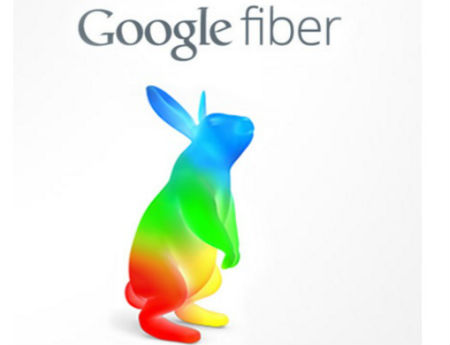Google Fiber TV Subs ‘Astonishingly Low’: Analyst

Google Fiber’s ambitions have drawn both bearish and bullish views from analysts, but new data from the U.S. Copyright Office shows that the initiative is not yet setting the world on fire, at least with respect to the number of video customers who have signed on so far.
Google Fiber ended 2015 with just north of 53,000 video subs, according to a blog post from MoffettNathanson analyst Craig Moffett that pointed to fresh data from the U.S. Copyright Office.
The number's a bit of a mixed bag. In Moffett's view, Google Fiber’s rate of video growth is strong, but should be stronger.
“The number of subscribers to Google's fiber service remains astonishingly low,” Moffett noted. Though the percentage growth rate for Google Fiber is high, he said the surprise is that the growth rate isn’t higher. "After all, there has been a steady stream of new cities announced, and they’ve now been at it for a long time in at least a handful of markets," he wrote.
According to Moffett’s analysis, Google Fiber ended Q4 2015 with 53,390 video subs, up from 28,867 a year earlier. Among individual service areas, it ended the year with about 12,189 video subs in Kansas City, Kan., on a base of 53,925 homes in the city (22.6% penetration), a 16.8% penetration in Kansas City, Mo. (37,338 subs on a base of 221,860 homes in the city); and 8.2% penetration in Provo, Utah (2,718 subs on 33.212 homes). Google Fiber, he found, also has 941 video subs in Austin, Texas.
The addition of fewer than 12,000 subs over a six month span “for a service that has generated this kind of fanfare isn’t terribly impressive,” he said, noting that Google Fiber now represents about 5/100ths of 1% of the U.S. pay TV market. “As a stand-alone entity, Google Fiber would be approximately 1/7th the size of the smallest distribution company in our firm’s coverage, Cable One. They are 1/15th the size of Mediacom, and just over 1/70th the size of the new U.S. Altice (assuming Altice’s deal for Cablevision successfully closes).”
Of course, Google Fiber’s video numbers don’t provide the full picture of its true progress. After all, Google Fiber tends to lead with a standalone 1 Gbps service that costs $70 per month. It also offers a double-play (1 Gig and pay TV), and also offers a free basic Internet service (5 Mbps down by 1 Mbps up) to customers who spring for the $300 construction fee.
The smarter way to stay on top of the multichannel video marketplace. Sign up below.
Moffett said his findings are not a suggestion that Google isn’t “doing well,” and did note that the numbers don’t factor in broadband.
“[W]e presume that Google has many more broadband subscribers than video ones. Still, this latest data is a useful barometer of just how slowly all this happens, and just how tiny Google Fiber remains in the grand scheme of things," he said.
And he is puzzled at Google Fiber’s apparent lack of progress and low penetration in Provo, where it acquired iProvo, then the area’s municipal fiber service provider, for $1, plus a pledge to complete and expand on the buildout there.
“Over the past six months, they have added exactly 65 subscribers in Provo. Yes, you read that correctly. There are no decimal places missing," Moffett wrote, while later pointing out that Google Fiber represents a large piece of Alphabet’s “other bets.”
Those other bets, which include Google Fiber and moonshot project like self-driving cars, lost $3.56 billion in 2015, alongside revenues of $448 million.
But others who watch Google Fiber closely believe that the initiative is poised to make a serious dent in the market and become a profitable enterprise.
Incumbents, Bernstein Research analyst Carlos Kirjner warned in a recent research note, should not get “too complacent” in the face of Google’s slow and limited progress so far.
In a note issued today, Kirjner noted that Alphabet and Google CFO Ruth Porat made comments at an investor conference this week reiterating that the company is taking a long-term view with Google Fiber, expecting it to morph into a sustainable, stand-alone business.
Google Fiber has also been mixing up its game plan a bit, and has begun to complementing its expanding reach by tapping into existing infrastructure (in San Francisco and Atlanta, for example), or to ride on top of municipally-owned fiber networks (as it’s set to do in Huntsville, Ala.) to accelerate its ability to offer services.
And that’s on top of Google Fiber’s commitments to deploy in Salt Lake City, Utah; Atlanta; Austin and San Antonio, Texas; Nashville, Tenn.; and Charlotte and Raleigh-Durham, N.C. It’s also mulling expansions in Chicago; Portland, Ore.; Los Angeles, San Jose, Irvine and San Diego, Calif.; Phoenix; Oklahoma City; Louisville, Ky.; and Jacksonville and Tampa, Fla.
But that’s still not enough to sway Moffett. “Over the past week, Google has made a number of splashy announcements,” he wrote. “Taken together, they have a rather provisional feel, as if the company is still experimenting. Or perhaps their goal is simply to showcase as many different models as they can think of, creating a menu of choices that they hope more and more municipalities will emulate (ideally without Google’s help).”
